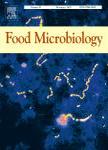版权所有:内蒙古大学图书馆 技术提供:维普资讯• 智图
内蒙古自治区呼和浩特市赛罕区大学西街235号 邮编: 010021

作者机构:Northeast Agr Univ Coll Vet Med Changjiang Rd 600 Harbin Heilongjiang Peoples R China Heilongjiang Key Lab Anim Dis Control & Pharmaceu Harbin Heilongjiang Peoples R China Heilongjiang Entry Exit Inspect & Quarantine Bur Technol Ctr Harbin Heilongjiang Peoples R China Northeast Agr Univ Coll Anim Sci & Technol Harbin Heilongjiang Peoples R China
出 版 物:《FOOD MICROBIOLOGY》 (食品微生物学)
年 卷 期:2019年第82卷
页 面:119-126页
核心收录:
学科分类:0710[理学-生物学] 0832[工学-食品科学与工程(可授工学、农学学位)] 08[工学] 0836[工学-生物工程]
基 金:Projects of National Key Research and Development Plans [2016YFD0500704] Heilongjiang Province Postdoctoral Science Fund [LBH-Z15015]
主 题:Norovirus Berries Real-time RT-PCR Risk surveillances
摘 要:Norovirus (NoV), a major food-borne virus, causes non-bacterial acute gastroenteritis in humans. Berries are generally harvested from low-growing bushes by hand and are minimally processed before being sold to consumers. Therefore, the consumption of berries has been linked to numerous food-borne gastroenteritis outbreaks caused by NoV in many countries. We performed a survey of NoV contamination in commercial fresh/frozen berry fruits collected from 2016 to 2017 in the Heilongjiang Province, the main berry-producing area in China, using a TaqMan-based real-time reverse transcription-PCR assay. Among 900 frozen and 900 fresh domestic retail berry samples, the prevalence of NoV was 9% (81/900) and 12.11% (109/900), including 35.80% (29/81) and 29.36% (32/109) of genotype GI alone, 54.32% (44/81) and 60.55% (66/109) of GII alone, and 9.88% (8/81) and 10.09% (11/109) of both GI and GII, respectively. No NoV was detected among the 677 frozen berry samples for export. Thus, the occurrence of NoV contamination was significantly higher in domestic berries than in exported berries and higher in fresh berries than in frozen berries. This study highlights the need for further risk surveillance for NoV contamination in berries produced in the Heilongjiang Province and recommends region-extended monitoring of retail berries for NoV.